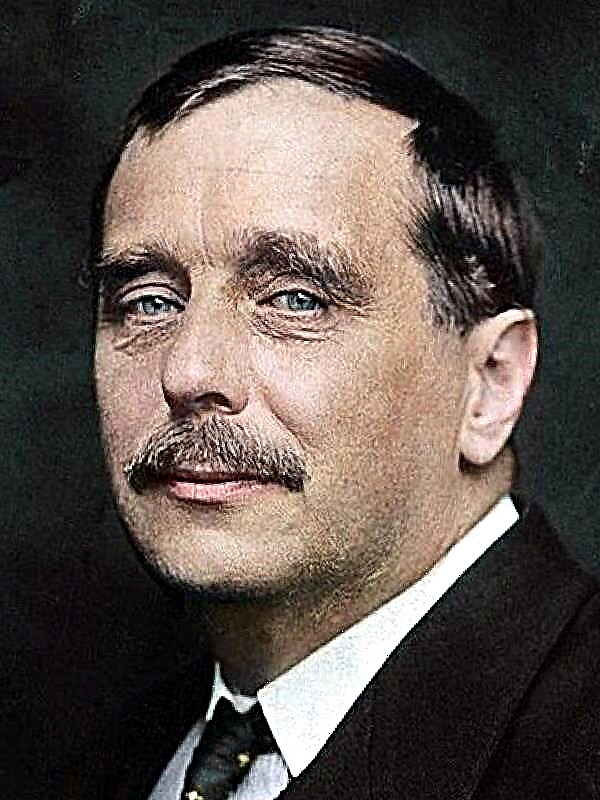The foundation of greatness: effective leadership
At the beginning of the journey, the main thing is to inspire people to follow you. You will never create a great company if your management style is ineffective. After all, it is you who determine the work style of the entire company, and your behavior is copied by employees at all levels.
Suppose you notice that the leadership methods that you use do not work well. How to fix the situation? Does this mean that you need to study the experience of successful leaders and act in the same way?
Yes and no. Blindly copy the style of recognized authorities is not worth it. It is just as unnatural as if Winston Churchill was copying the manner of speaking of Mahatma Gandhi. Your management style should reflect the characteristics of your personality. Nevertheless, the style of all effective leaders includes seven common elements.
Sincerity
Nothing will work out if you choose and proclaim those values that are most convenient to practice in a particular situation. Believe in your ideals sincerely and act in accordance with them.
Determination
Do not be afraid to make mistakes, do not be afraid to seem stupid. Make decisions based on facts and intuition, which will help you focus on the essence of the problem and quickly answer “yes” or “no”.
Resort to the help of subordinates if you consider it necessary. Optimal decisions are made when the best employees are involved in their discussion. And subsequently, people are more willing to perform tasks for which they were involved.
But if circumstances require you to act independently, you should not play democracy. As practical examples convince, pretending to be a democrat, a great company cannot be built.
If the decision turned out to be wrong - admit it and look for a way out of the situation. Do not blame employees for failures. And in the same way, share personal success with everyone who worked for it.
Concentration
Reduce the number of priority tasks to three and focus only on them. Be sure to spend time in the main areas.
Personal involvement
Pay attention and time to everything that happens in the company, build sincere and close relationships with employees, customers, suppliers, investors and the outside world as a whole.
The head of the organization must take the time to personally visit the production, communicate with ordinary employees, and discuss even the smallest problems with them. Otherwise, he loses touch with the real life of his company.
A classic example is Sam Walton, founder of Wal-Mart's supermarket chain. Once, unexpectedly for everyone, he got behind the wheel of a truck delivering goods to the company's supermarkets, and drove 100 miles to personally evaluate how the company's transport system works.
Ability to work with people
Leaders who build great companies require subordinate results to be incredibly high and at the same time make considerable efforts to maintain their enthusiasm and pride in their work.
Motivation, feedback and mentoring allow employees to develop faster and more easily overcome difficulties. By helping people unlock their abilities, a leader increases his company's chances of taking the highest bar.
Sociability
Unfortunately, many managers do not know how to communicate with subordinates, although this is an important part of their work. As a leader, you must build constant and stable communication in a group and individually, in writing and orally, formally and informally.
You must be able to convey your vision of the future and the strategy of the company to each employee. To do this, use vivid images, analogies and examples.Hold meetings, encourage employees to bring up any issues for discussion, express their thoughts and feelings openly, and thank employees who have touched on any important topics.
Development focus
The leader of a great company is constantly developing as a person and infects with the desire to move forward the whole company. He is an energetic, enthusiastic, truly living person.
Identify and correct your flaws, talk with interesting people, be open to new ideas, take care of your physical and spiritual health, and most importantly - constantly change. As a leader, you must believe in the company and its future. Your optimism should be combined with perseverance and determination.
Vision: a compass of a great company
So, you have adjusted your management style. So, there is a basis to realize the primary function of leadership - to develop a clear vision of the future of your company, which is shared and based on by employees.
A profitable business can be created without any vision, but it’s hardly possible to build a great company. Companies such as Nike, Marriott, Sony, etc., owe their success precisely to a clear vision that was formulated and implemented when the company was still small.
The idea that a leader should have a vision and a mission is almost a textbook. This is stated in any management textbook. Almost every organization tries to formulate and develop a vision. But few companies succeed. Why it happens?
Partly because companies communicate their strategy to employees in very vague, official formulations that are not able to inspire a feat. If you need several sentences and complex terms to describe the goals and prospects of your business, consider that you do not have a clear understanding of the vision and mission. Achieve extreme simplicity, clarity and conciseness.
If you want to make your company great, first you need to understand what beliefs and values you personally adhere to. Then you must formulate the philosophy of your business - to understand for yourself what your company exists for. Ask yourself five times a simple question: “Why are we doing this?” - and with each answer, specify the purpose of your business. Then, based on your purpose, designate your mission - a clear and convincing goal that you want to achieve on time.
An example of an excellent mission is the NASA mission, which John F. Kennedy announced in 1961. “Our people must devote all their strength to delivering a man to the moon before the end of the decade and returning him unharmed to Earth.” Compare with your mission. Do you want to go to conquer the world after reading this document?
Your mission may be based on setting a simple goal. For example, to become the main suppliers of computers in Russia. She can call for battle with a competitor, as, for example, did PepsiCo, which in 1940 set a goal: “To defeat Cola”. You can formulate a mission on the principle of imitation. For example: “Become IBM in Real Estate.”
And finally, the fourth type of mission is associated with transformation. A classic example is the mission of General Electrics: "We must make our company as flexible, economical, simple and fast as any small business."
Having formulated a vision, you will do half the battle. Now we need to convey it to each employee using a vivid picture of the future. Here you will need to pay special attention to working with people and building personal communications.
Great strategy
The next sign of a first-class company is the presence of a conquering peak strategy, a well-designed, understandable and uncomplicated system of mission implementation methods. When creating a strategy, the following principles should be taken into account: it must correspond to the vision, contribute to the maximum use of the advantages and unique opportunities of your company, be realistic, and be developed with the participation of its future performers.
More often, small and medium-sized companies developing a strategy have four fundamental questions.
How to grow fast?
In one of the interviews, HP Bill Hewlett recommended to a young business: “Don't try to grow too fast. Growth must be restrained in order to create a good management system. ”This problem requires serious consideration.
Of course, rapid growth in itself is very attractive: a growing company has a positive image in the market, it provides a wide space for employees to develop. Often, if competitors step on their heels, there is no choice whatsoever but to run faster and faster.
But there are many disadvantages caused by rapid growth. He eats a ton of resources. Money invested in expanding a business is often returned several months late. The urgent need for new employees makes it necessary to hire people who do not always share the values of the company and who can destroy its corporate culture. Are you ready for these problems? Do you want to make your business big in principle?
Concentration or diversification?
Often a small company is the most successful, striving to become the best in a narrow segment of the market. With this strategy, you can more effectively use time, energy managers and other resources.
However, concentration has its drawbacks: the growth of your business is limited by the size of the segment in which you work, you risk missing many new opportunities that are beyond its borders. Therefore, it is necessary to diversify the business, but in stages: first concentrate on one segment, then, having achieved all the goals in a narrow market, expand work in one of the new areas, which are a logical continuation of the main business of the company. For example, first produce running shoes, then any other sports shoes, and finally sportswear.
Become a public company?
Entering the stock market is usually perceived not only as an opportunity to raise capital, but also as a symbolic stage in the history of business. However, even some of the successful Fortune 500 companies choose to remain private.
Therefore, as in previous cases, we must weigh the pros and cons. The main disadvantages of publicity: this is an expensive operation; it will be more difficult for you than before to make short-term financial losses in the name of long-term success; you may lose control of your business. Still want to become a public company?
Lead the market or follow the market?
Pioneers usually have advantages. Consumers get used to working with them, their brand quickly becomes known and begins to dominate the market.
However, all this does not guarantee constant leadership. Often, the one who enters the market second is more successful by offering an improved product or using a more effective marketing strategy. For example, Ford lost its position as a leading automobile manufacturer in the 1920s - after GM launched more modern and high-quality cars.
Innovation and Tactical Improvement
The ultimate success in business is determined not by bright advanced ideas, but by professional and advanced methods of their implementation. Therefore, in order to fulfill the intended strategy, good tools are needed - innovation and quality management. How to work with them?
First, the search for innovation must be encouraged. You must create an organization that responds to any unusual idea that comes from outside as if it were coming from you.
All great ideas at first seem worthless. But you and your employees should notice everything new and think how to make a commercially successful product with all the flaws of the idea (and there are no perfect ideas).
Try to put yourself in the shoes of the buyer: what problems can your idea solve? Would you use a new product? What needs to be done to captivate the consumer with a new product? And do not be afraid to experiment and make mistakes. Thomas Edison had to make 9 thousand unsuccessful attempts before he created a light bulb. Without the efforts of courageous experimenters, we would not use a telephone, a photocopier, etc.
Secondly, you must constantly improve the tactics of moving to the top. Assess at what point on this path you are today, think about how to make the movement more stable and focused, determine an action plan, complete it, fix your new state, and then repeat it all over again.
You must actively interact with the team, clearly explain to everyone what their task is, what they should be able to do and what the purpose of this ascent to the top is. Here again leadership skills and vision will help you.
Mentally walking the path of a great company, you can take the first real step towards becoming a leader.












